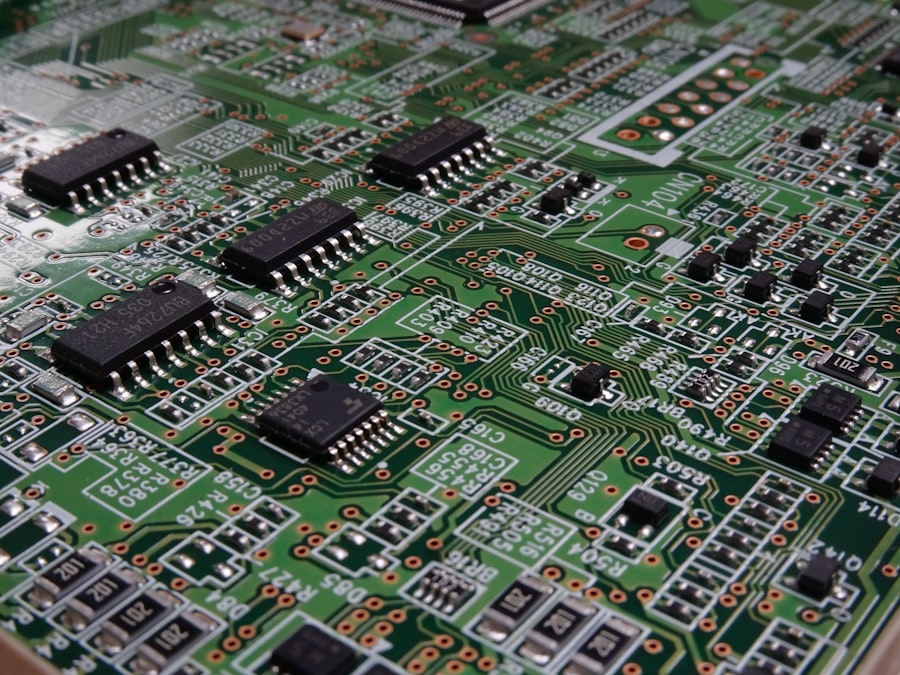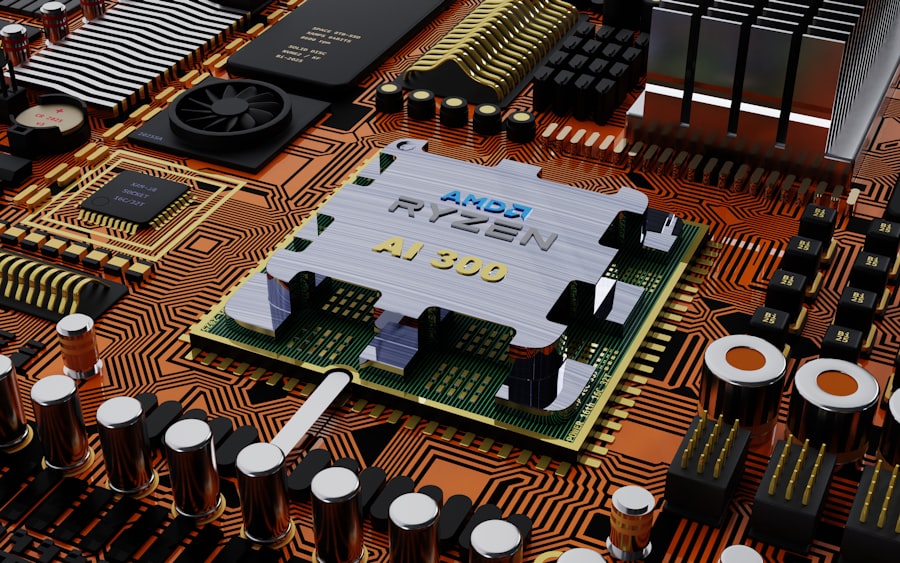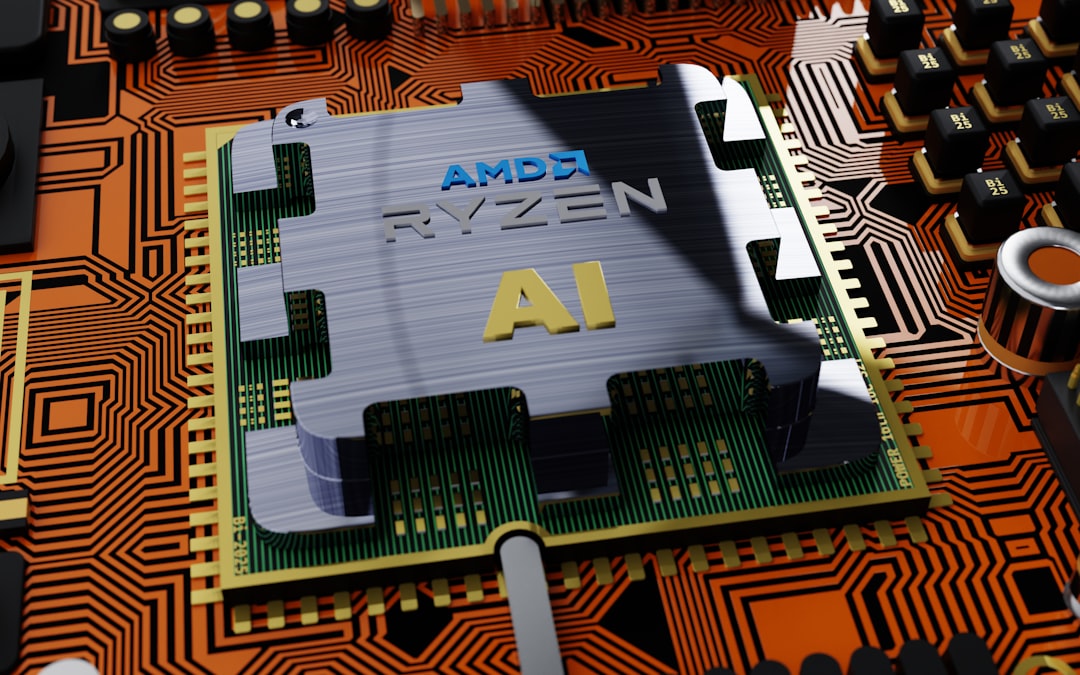Embedded systems are specialized computing systems that perform dedicated functions within larger mechanical or electrical systems. Unlike general-purpose computers, which can run a variety of applications, embedded systems are designed to execute specific tasks with high efficiency and reliability. They typically consist of a microcontroller or microprocessor, memory, input/output interfaces, and software tailored to the application.
This integration allows embedded systems to operate autonomously, often with real-time constraints, making them essential in various applications ranging from consumer electronics to industrial machinery. The architecture of embedded systems can vary significantly based on their intended use. For instance, a simple embedded system might control a household appliance like a microwave, while a more complex system could be found in automotive applications, managing everything from engine control to advanced driver-assistance systems (ADAS).
The design of these systems often prioritizes factors such as power consumption, size, and cost-effectiveness, which are critical in ensuring that they meet the specific requirements of their applications. As a result, embedded systems are characterized by their ability to operate under stringent constraints while delivering reliable performance.
Key Takeaways
- Embedded systems are specialized computing systems designed to perform specific tasks within a larger system.
- Embedded systems have evolved from simple, single-function devices to complex, interconnected systems with advanced capabilities.
- Embedded systems play a crucial role in driving technological revolution by enabling automation, connectivity, and smart functionality in various devices and systems.
- Advantages of using embedded systems include improved performance, reduced size and cost, increased reliability, and lower power consumption.
- Challenges in implementing embedded systems include hardware and software integration, security concerns, and the need for specialized skills and expertise.
The Evolution of Embedded Systems
The evolution of embedded systems can be traced back to the early days of computing when the first microcontrollers were introduced in the 1970s. These early devices were rudimentary by today’s standards but laid the groundwork for the development of more sophisticated embedded systems. The introduction of microprocessors allowed for greater computational power and flexibility, enabling engineers to design systems that could handle more complex tasks.
Over the decades, advancements in semiconductor technology have led to the miniaturization of components, allowing for the creation of smaller and more powerful embedded systems. As technology progressed into the 1990s and 2000s, the rise of the Internet and wireless communication further transformed embedded systems. The concept of the Internet of Things (IoT) emerged, where everyday objects became interconnected through the internet, allowing for remote monitoring and control.
This shift not only expanded the scope of embedded systems but also increased their complexity as they began to incorporate networking capabilities. Today, embedded systems are at the heart of numerous applications, from smart home devices to industrial automation, reflecting a significant evolution from their initial designs.
The Role of Embedded Systems in Technology Revolution

Embedded systems have played a pivotal role in driving the technology revolution across various sectors. Their ability to integrate computing power into everyday devices has transformed how we interact with technology. For instance, in consumer electronics, embedded systems enable features such as touchscreens, voice recognition, and smart connectivity in devices like smartphones and tablets.
This integration has not only enhanced user experience but has also paved the way for innovative applications that were previously unimaginable. In industrial settings, embedded systems have revolutionized manufacturing processes through automation and real-time data processing. Programmable Logic Controllers (PLCs) and Industrial PCs equipped with embedded systems allow for precise control over machinery and production lines.
Moreover, the advent of Industry 4.0 has further emphasized the importance of embedded systems in creating smart factories where machines communicate with each other and optimize production processes autonomously.
Advantages of using Embedded Systems
| Advantages of using Embedded Systems |
|---|
| 1. Real-time operation |
| 2. Small size and low cost |
| 3. Low power consumption |
| 4. High reliability |
| 5. Customizable for specific tasks |
The advantages of using embedded systems are manifold and contribute significantly to their widespread adoption across various industries. One of the primary benefits is their efficiency in performing dedicated tasks. Since embedded systems are designed for specific applications, they can execute functions with minimal resource consumption, leading to lower power usage and reduced operational costs.
This efficiency is particularly crucial in battery-operated devices where power conservation is paramount. Another significant advantage is their reliability and stability. Embedded systems are often built with robust hardware and software that can withstand harsh operating conditions.
For example, automotive embedded systems must function reliably under extreme temperatures and vibrations. This reliability is essential not only for consumer satisfaction but also for safety-critical applications such as medical devices and aerospace systems where failure can have dire consequences. Furthermore, the long lifecycle of embedded systems allows manufacturers to maintain consistent performance over extended periods, making them ideal for applications requiring longevity.
Challenges in Implementing Embedded Systems
Despite their numerous advantages, implementing embedded systems comes with its own set of challenges. One major hurdle is the complexity involved in designing and developing these systems. Engineers must consider various factors such as hardware compatibility, software integration, and real-time performance requirements during the design phase.
This complexity can lead to longer development cycles and increased costs if not managed effectively. Additionally, security concerns pose a significant challenge for embedded systems, especially as they become more interconnected through IoT frameworks. Vulnerabilities in embedded software can be exploited by malicious actors, leading to data breaches or even physical damage to devices.
Ensuring robust security measures while maintaining performance and usability is a delicate balance that developers must navigate. Moreover, as technology evolves rapidly, keeping up with new standards and protocols can be daunting for organizations looking to implement cutting-edge embedded solutions.
Emerging Trends in Embedded Systems

The Rise of Artificial Intelligence in Embedded Systems
One notable trend is the increasing integration of artificial intelligence (AI) into embedded systems. AI algorithms enable these systems to process data more intelligently and make decisions based on real-time inputs. For instance, smart cameras equipped with AI can analyze video feeds for security purposes or traffic management without human intervention.
The Shift towards Edge Computing
Another significant trend is the shift towards edge computing in embedded systems. Traditionally, data generated by embedded devices was sent to centralized cloud servers for processing. However, with edge computing, data processing occurs closer to the source, reducing latency and bandwidth usage.
Real-Time Applications and Benefits
This trend is particularly beneficial for applications requiring real-time responses, such as autonomous vehicles or industrial automation where immediate decision-making is critical.
Applications of Embedded Systems in Different Industries
Embedded systems find applications across a diverse range of industries, each leveraging their unique capabilities to enhance functionality and efficiency. In the automotive sector, embedded systems are integral to modern vehicles’ operation, controlling everything from engine management to infotainment systems. Advanced Driver-Assistance Systems (ADAS) rely on embedded technology to provide features like adaptive cruise control and lane-keeping assistance, significantly improving road safety.
In healthcare, embedded systems play a crucial role in medical devices such as pacemakers, insulin pumps, and diagnostic equipment. These devices require high reliability and precision to ensure patient safety and effective treatment outcomes. The integration of wireless communication capabilities also allows for remote monitoring of patients’ health metrics, enabling timely interventions when necessary.
Smart home devices like thermostats, security cameras, and smart speakers utilize embedded technology to provide users with convenience and control over their living environments. These devices often communicate with each other through IoT platforms, creating interconnected ecosystems that enhance user experience.
Future of Embedded Systems in Technology Innovation
Looking ahead, the future of embedded systems appears promising as they continue to drive technological innovation across various domains. The ongoing advancements in semiconductor technology will likely lead to even more powerful and energy-efficient microcontrollers and processors. This will enable the development of more sophisticated applications that require higher computational capabilities while maintaining low power consumption.
Moreover, as industries increasingly adopt automation and smart technologies, the demand for advanced embedded systems will grow exponentially. The convergence of technologies such as AI, machine learning, and IoT will further enhance the capabilities of embedded systems, allowing them to perform complex tasks autonomously. For instance, in agriculture, smart sensors equipped with embedded technology can monitor soil conditions and optimize irrigation processes based on real-time data analysis.
In conclusion, as we move into an era characterized by rapid technological advancements and increasing interconnectivity, embedded systems will remain at the forefront of innovation. Their ability to integrate seamlessly into various applications while providing efficiency and reliability will ensure their continued relevance in shaping the future of technology across multiple industries.
If you are interested in exploring the nature of reality and human existence from a philosophical perspective, you may find this article on Vedanta philosophy to be insightful. Vedanta philosophy delves into the fundamental nature of reality and the interconnectedness of all things, offering a unique perspective on the nature of existence. This philosophical exploration can provide a thought-provoking contrast to the technical discussions surrounding embedded systems.





















+ There are no comments
Add yours